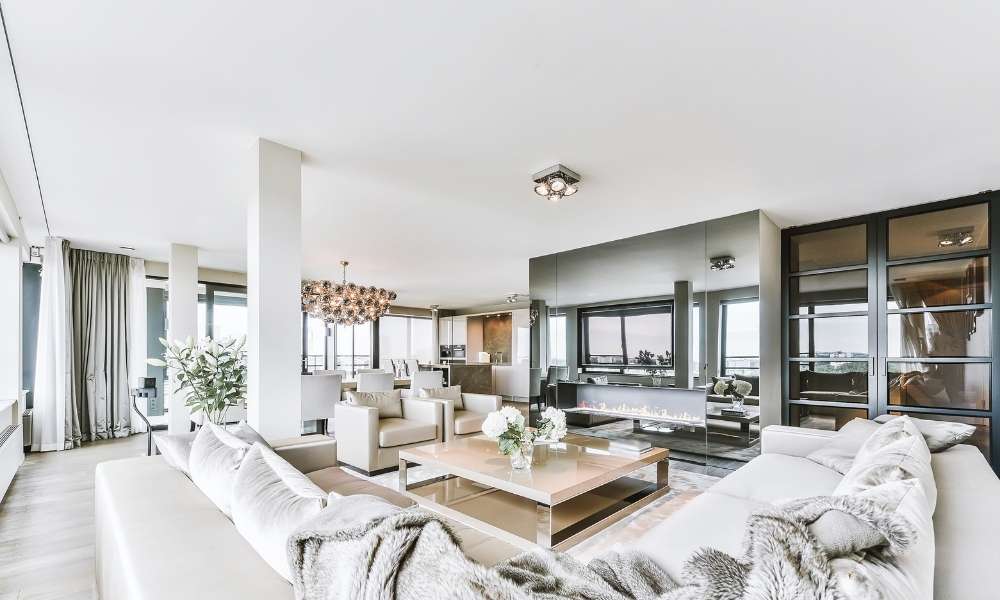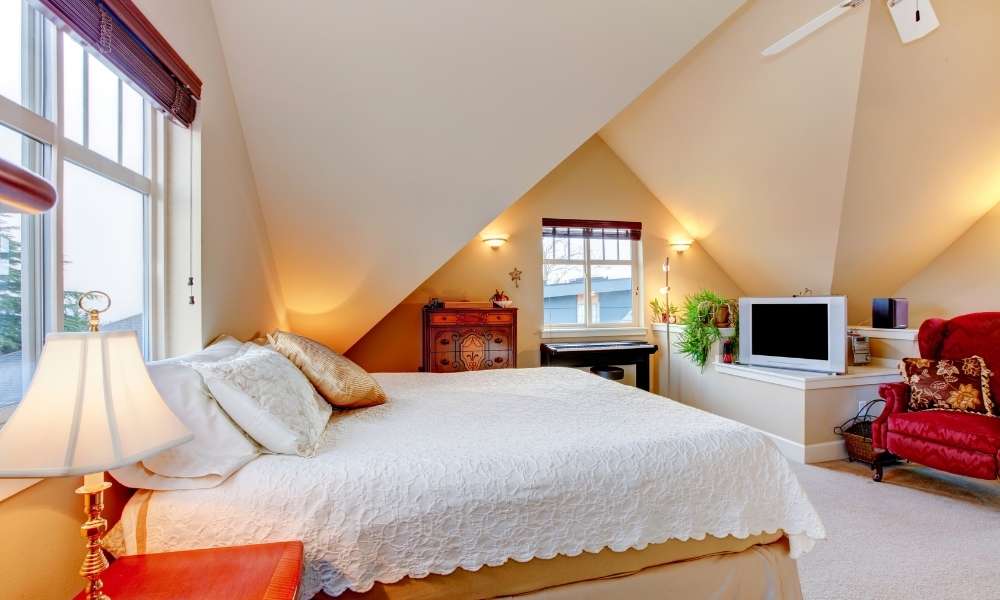Choosing the right placement for lamps in a bedroom can transform the space from merely functional to a cozy, inviting sanctuary. Lighting plays a pivotal role in setting the mood, enhancing decor, and dictating the functionality of your bedroom. It’s more than just a matter of where to place a lamp to illuminate the room; it’s about creating a harmonious balance between aesthetics and practicality. This guide will explore various strategies for optimal lamp placement in your bedroom, ensuring that your lighting serves both your style and your needs efficiently.
Bedside table
The most popular and practical placement for a lamp in the bedroom is on a bedside table. A Clip Table Lamp on each side of the bed creates symmetry and balance, making the space feel visually appealing and harmonious. This placement also offers convenience as it provides light for reading or other activities in bed. When selecting lamps for your bedside table, consider their size and proportion to the table
Ambient lighting
Creating a soothing atmosphere in the bedroom is crucial for relaxation, and ambient lighting plays a significant role in achieving this. Installing a central ceiling fixture or using wall-mounted lights can disperse light evenly throughout the room, setting a calm and welcoming tone. Dimmer switches are a valuable addition to ambient lighting, allowing you to adjust the brightness according to the time of day or your mood. For a more decorative approach, consider using floor lamps in corners or near seating areas to add warmth and style.
Avoid glare
When planning the placement of lamps in the bedroom, particularly task lighting in your bedroom, it’s crucial to consider the direction of light to avoid glare. Position lamps in such a way that the light source doesn’t directly hit your eyes while you’re lying in bed or sitting at a desk. This can involve choosing lamps with adjustable arms or shades that can be tilted or rotated. Furthermore, for reading in bed, ensure that the lamp is positioned to cast light over your shoulder, providing clear, focused illumination on your book or device without causing strain to your eyes. This thoughtful approach not only enhances comfort but also contributes to the overall ambiance of your bedroom sanctuary.
Symmetry
Achieving symmetry in lamp placement can significantly enhance the visual harmony of a bedroom. For instance, matching lamps placed on either side of the bed not only serve a functional purpose but also foster a balanced and cohesive aesthetic. This symmetry is particularly effective in bedrooms with a traditional or formal design style. However, it’s crucial to consider the scale and design of the lamps to ensure they complement the overall decor. Symmetrical lamp placement is not limited to bedside tables; it can also be applied to matching floor lamps positioned on either side of a dresser or wardrobe, further emphasizing a room’s equilibrium and polish.
Height considerations
When considering lamp placement, the height of the lamp plays a pivotal role in both aesthetics and functionality. Ideally, when placed on a bedside table, the lamp should be at eye level when you are sitting up in bed. This prevents the light from being too harsh or direct, creating a more comfortable environment for reading or relaxing. It’s also important to consider the scale of the lamp concerning the rest of the room and furniture.
A lamp that is too tall can overpower a space, while one that is too short may not provide adequate light. Similarly, in areas like reading nooks or desks, the height of the lamp should ensure that the light adequately covers your reading or working area without casting shadows or causing glare on screens.
Functional zones
Dividing your bedroom into functional zones can further guide the placement of lamps to meet specific needs. For example, a desk or reading nook requires task lighting that is bright and focused, whereas a cozy corner for relaxation may benefit from softer, ambient lighting. By identifying these zones, you can strategically place lamps to enhance both the functionality and the aesthetic appeal of your bedroom. Floor lamps with adjustable brightness settings are ideal for areas dedicated to relaxation, allowing you to tailor the lighting to your activities, whether it’s reading, meditating, or simply unwinding at the end of the day.
Wall-mounted options
Wall-mounted lamps are another versatile lighting option that can add both style and function to your bedroom. They are particularly useful in smaller rooms where table space is limited or in layouts where it’s impractical to have a floor lamp. Wall-mounted lamps next to the bed serve as excellent task lighting for reading while freeing up space on your bedside table for other essentials. When installing these lamps, it’s important to consider the height and direction of the light to ensure it meets your needs without being intrusive.
Additionally, wall-mounted lamps with swing arms or adjustable fixtures offer flexibility, allowing you to redirect the light as needed. This option not only enhances the functionality of your bedroom but also contributes to a sleek and modern aesthetic.
Dimmer switches
Incorporating dimmer switches into your bedroom lighting scheme offers unparalleled flexibility in adjusting the room’s ambiance. With the simple turn of a knob or slide of a switch, you can transform your bedroom from a bright and energizing space to a soft and serene escape. Dimmer switches are especially useful for ambient lighting fixtures, allowing you to customize the brightness level to suit different activities or times of the day. For a more technologically advanced option, consider installing smart dimmers that can be controlled via smartphone apps or voice commands. This modern solution not only adds convenience but also helps in energy conservation, as you can easily monitor and adjust your lighting usage.
Cord management
Effective cord management is essential for maintaining a neat and orderly bedroom environment, especially when incorporating multiple lighting fixtures. Unsightly cords can detract from the overall aesthetics of your room and pose potential tripping hazards. One strategy for managing cords is to use cord clips or ties to bundle them together and route them along the edges of furniture or baseboards, making them less visible. For lamps placed on bedside tables, consider using cord concealers that match the color of your wall or table to blend the cords into the background. Additionally, selecting lamps with built-in cord storage features can minimize clutter.
Avoid clutter
While introducing various lighting elements into your bedroom to enhance its ambiance and functionality, it’s important to maintain a balance to avoid clutter. Overloading your space with too many lamps or lighting fixtures can lead to a chaotic environment, detracting from the peaceful and restful vibe essential for a bedroom. Choose lighting that truly serves your needs—opt for multi-functional lamps that can adjust in brightness or direction as required. Consider the design and size of each lamp to ensure it harmonizes with your room’s aesthetics without overwhelming it. By being selective and purposeful in your lighting choices, you can create a well-lit space that remains tranquil and inviting, truly a haven for relaxation and rejuvenation.
Safety first
This is especially important for wall-mounted lamps and those situated near the bed, where they can be easily bumped or moved. Additionally, it’s crucial to use the correct type of bulbs for each lamp, adhering to the manufacturer’s recommendations regarding wattage and bulb size. Overloading lamps with bulbs that are too powerful can lead to overheating, posing a fire risk. It’s also wise to keep fabrics and other flammable materials at a safe distance from light sources. Double-check that all cords and plugs are in good condition, without any fraying or damage, and make use of surge protectors to safeguard against electrical surges that could damage your lighting fixtures. By taking these precautions, you can enjoy a beautifully lit bedroom that is both safe and serene.
Personal preference
The lighting scheme of your bedroom should cater to your personal preferences and lifestyle needs. Whether you favor a minimalist design with sleek, modern fixtures or a more traditional setup with warm, ambient lighting, the choice is yours to make. Remember to consider how the room’s natural lighting interacts with your selected artificial lighting options throughout the day. Experimenting with different light intensities and colors can help achieve the perfect atmosphere that reflects your style and enhances your mood. Incorporating elements like color-temperature adjustable bulbs can further personalize your space,
Conclusion
The strategic placement of lamps in a bedroom significantly enhances the room’s ambiance, functionality, and overall aesthetic. By thoughtfully positioning lamps on bedside tables, desks, or floor areas, homeowners can create a warm, inviting atmosphere conducive to relaxation and comfort. The choice of lamp type, whether task, accent, or ambient lighting, should align with the room’s design scheme and the occupant’s lifestyle needs. Additionally, considering factors like the direction of light, intensity, and lamp style can further personalize and optimize the bedroom space. Ultimately, the thoughtful integration of lamp placement not only illuminates the room but also elevates the living experience, showcasing the power of lighting in transforming a simple bedroom into a serene sanctuary.




